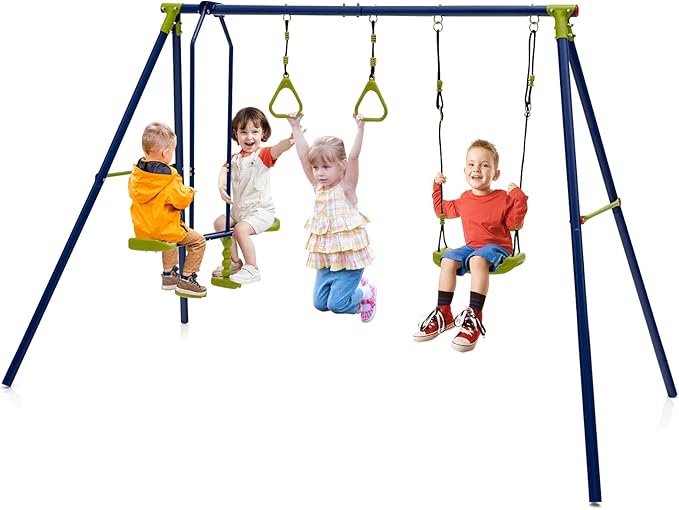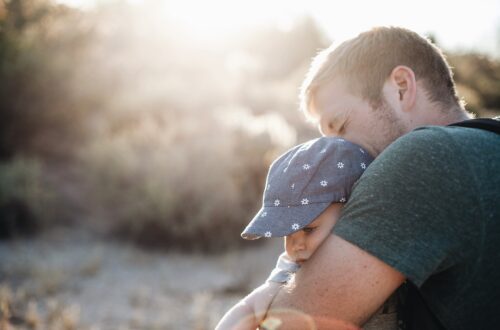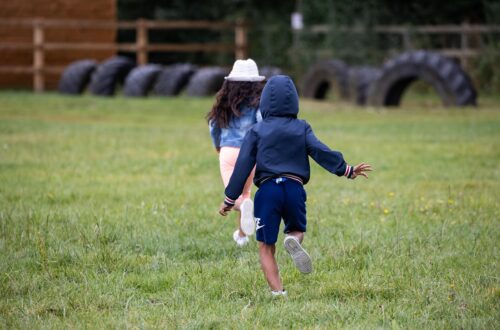
The benefits of risk-taking for children
The benefits of risk-taking for children can be lost. Instead, you may feel the very real necessity to keep your children safe.
Keeping your child safe and well is, of course, your number one priority. We all have the ominous “what if” hanging over our heads.
With the rise of social media, you may feel even more scared. Your home page may be full of horror stories and worst case scenarios.
So, why talk about the benefits of risk-taking for children?
Taking risks does not mean acting dangerously
Before we go any further, let us clarify. Risk-taking is not the same as dangerous behaviour. Of course, dangerous behaviour is an extreme form of risk-taking. However, your child can take risks without engaging in dangerous behaviour.
The difference is the potential for harm. You do not want to teach your children to run blindly into a road, jump into a rough sea or anything that might cause them actual harm. Our children are precious, vulnerable and worth keeping safe. There are a lot of situations that you do not want them to put themselves in.
Navigating risks safely
One way that you can embrace the benefits of risk-taking for your children, without exposing them to danger, is by teaching them to navigate the risks safely.
By doing this, you do not remove the danger, but you teach them to be aware of it and how to manage their own safety.
An example of this could be climbing trees. Climbing trees carries a certain amount of risk, which we are all aware of. Rather than stopping them from climbing trees, or worse still, letting them climb and hoping for the best, teach them to climb safely. You can talk to them about how to understand their limits, and know how high is too high. Encourage them to test every branch before they step on it, and work slowly and carefully.
As children get older, the situations that they have to navigate can be more dangerous. They begin to have more independence, so are often navigating these situations without our supervision. As you allow them to take big steps, like walking to school on their own, or taking the bus on their own for the first time, ensure that they know the risks they may come across and how to manage them.
Emotional risks
Sometimes the risks that our children will face won’t be physical ones; Rather they will be emotional. The same as for adults, trying something new can be daunting for a child. They may be afraid of making a fool of themselves or failing.
As children are born with the innate need to fit in, the fear of being excluded or humiliated can feel just as real as the fear of physical harm.
Overcoming emotional risks and being brave enough to expose themselves to failure can help your child develop resilience. When they step out of their comfort zone, they become more willing to try new things.
The benefits of risk-taking for children
Risk-taking is a natural part of a child’s development. By recognising, exploring and then overcoming their fears, they learn about themselves and the world that they live in.
The mental benefits
If a child does not have the opportunity to confront some of their fears in a natural way, the fears can intensify. In the long run this can lead to children who are anxious, or even have phobias.
When a child is allowed to navigate risk safely, they learn to see their fear in perspective. They also learn the steps needed to stay safe around the risk, which can be empowering and give them a sense of control. Once they have managed to persevere and accomplish a risky task, a child will feel a sense of achievement and accomplishment.
Also, by being allowed to manage a certain amount of risk, children get to practise their cognitive reasoning skills and experience problem-solving.
The physical benefits
A lot of things that you may classify as risky play can be an important part of your child’s physical development. Through activities such as climbing, bike-riding, skating, spinning, rolling and general rough play, your child can become more physically aware. They learn what their body is capable of and how to keep themselves safe. Children who are allowed to engage in risky play will learn to recognise their own limits.
The social benefits
Children who have engaged in risky play and navigated challenging situations will be more confident with higher self-esteem. This can help them socially.
Risk-taking sometimes involves taking social risks as well as physical ones. It may be as simple as talking to someone new on the playground, or acting in a play in front of their friends. By overcoming their fears and stepping outside their comfort zones children will have opportunities to test and develop a plethora of skills, social and other.
How to encourage your children to take risks
Now that we have looked at the benefits of risk-taking for children, let’s look at how to encourage them to step out of their comfort zones. Also, how to encourage risk-taking, whilst prioritising their safety.
Retain boundaries
As well as encouraging our children to take risks, we want to make sure that they know what risks are safe to take. When you are talking to your children about risky play or trying new activities make sure that you set clear boundaries. For example, if you are allowing your children to use sharp knives when they help you cook, a reasonable rule would be that they are not allowed to touch the knives unless there is an adult standing by them
Talk through a risk assesment with them before
As well as boundaries, ensure they are aware of the risks and how to avoid them. With sharp knives they must learn how to turn the blade away from the finger. If they are walking to school on their own for the first time they need to know not to be careful crossing the road. Whatever the activity, talk through a little risk assessment before to ensure they are aware of what could go wrong and how to avoid it.
Be aware of developmental readiness
Although at times taking calculated risks can be beneficial for your child, it is important to ensure that your child is ready for the situation that they are walking into.
It is healthy, and beneficial for children to be allowed to fail. However, encourage them to engage in situations where, with time and hard work they have the potential to succeed.
If your child is still working on their general motor skills, asking them to climb a high tree would not only be demoralising, but also dangerous. Instead start with something small like a trim trail or climbing frame to enable them to work on the skills that they need.
By staying aware of what level your child is at, you can encourage them to engage in risky play that is tricky, but not impossible for them.
Model bravery
Your children learn a lot from watching you. By modelling calculated risk-taking, you can encourage your children to do the same.
What is it that you fear? If you are afraid of heights, be honest about it. Show your child how you step out of your comfort zone, and expose yourself to heights, without dangerous behaviour. As our children see us weighing up, managing, and facing risk, they will learn to do the same.
A final note
Risk-taking offers benefits to your child, socially, physically and mentally.
Of course, you love your children, and want to keep them safe. With clear boundaries, guidance and support, however, your child can be taught to face risk and manage it without exposing themselves to danger.
I wish you all the peace,
Hannah Louise
References
BBC. “Why It’s Good for Children to Take Risks and Challenge Themselves through Play.” BBC Tiny Happy People, 2024, www.bbc.co.uk/tiny-happy-people/articles/znpwkty.
Care Learning. “Positive Risk Taking in Health and Social Care – Care Learning.” Carelearning.org.uk, 20 May 2024, carelearning.org.uk/blog/person-centred-care/positive-risk-taking-in-health-and-social-care/.
Hanscom, Angela. “Risk-Taking and Child Behaviour | Over-Protection and Child Development | Community Playthings.” Www.communityplaythings.co.uk, Apr. 2017, www.communityplaythings.co.uk/learning-library/articles/remove-the-bubble-wrap.
WJEC. “The Importance of Being Able to Take Risks with Considerations of the Well-Being of Children.” Amazonaws.com, 2019, resource.download.wjec.co.uk.s3.amazonaws.com/vtc/2018-19/HSC18-19_3-1/_multi-lang/unit05/01-risk-taking.html.









